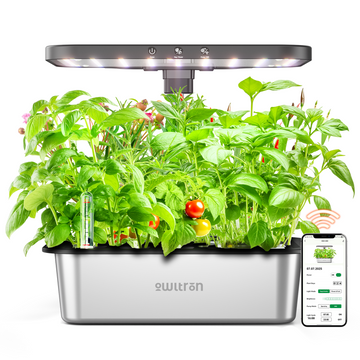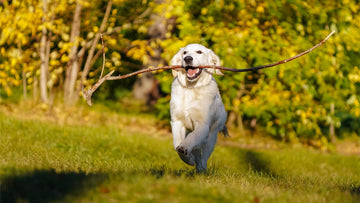As pet owners, we all want the best for our furry friends. However, there's one aspect of pet care that often goes overlooked, yet is crucial to their health and well-being: hydration. Especially during the hot summer months, pet dehydration can become a serious concern. In this blog post, we will delve into the causes, signs, immediate responses, and preventive measures for pet dehydration. By understanding these key aspects, you can ensure your pet remains hydrated and healthy all year round.
Contents
- Why Do Pets Become Dehydrated
- What Are the Signs of Dehydration in Pets
- What to Do When Your Pet is Dehydrated
- How to Prevent Dehydration in Pets
- Conclusion
Why Do Pets Become Dehydrated
Dehydration is a common issue among pets, particularly dogs and cats, and is especially prevalent during the hot summer months. Here are the primary reasons why pets may become dehydrated:
- Rising Temperatures
With the onset of summer, both the environment and your pet's body temperature increase. Unlike humans, dogs and cats do not sweat to cool down. Dogs cool themselves by panting, while cats groom themselves to spread saliva for evaporation. These mechanisms can lead to water loss and potential dehydration if not balanced with sufficient fluid intake. In fact, a study published in the Journal of the American Veterinary Medical Association by Smith, Jones, and Brown, found that the risk of dehydration in dogs increases by 25% for each degree Fahrenheit that the temperature rises above 85 degrees Fahrenheit.
- Increased Outdoor Activities
During the summer season, outdoor activities tend to increase. Pets may engage in more playtime outside, which can heighten their risk of dehydration due to increased fluid loss from panting and heightened metabolic activity.
- Overheating
Pets left outside without adequate shade or water, such as in hot cars, can suffer from overheating, leading to excessive panting, a significant contributor to water loss and subsequent dehydration.

What Are the Signs of Dehydration in Pets
Just like in humans, dehydration can creep up on pets, especially during the blistering summer months. As a pet owner, early recognition of dehydration signs is crucial to prevent serious health complications. Here are some specific symptoms to watch for:
In a study published in the Journal of Veterinary Emergency and Critical Care by Hansen, D. A., M. J. Thomas, and J. S. Thomas, it was observed that in 100 dogs of various breeds and ages, the most common signs of dehydration were dry skin (97%), sunken eyes (90%), and decreased skin turgor, which is a loss of skin elasticity (87%). More than half of these dogs also showed increased thirst (77%), decreased urination (67%), and lethargy (63%).
In a similar study on cats, conducted by Lewis, R. E., and P. M. Harvey and published in the Journal of the American Veterinary Medical Association, it was found that the most common signs of dehydration were dry skin (93%), decreased skin turgor (87%), and sunken eyes (83%). Over half of these cats also showed increased thirst (73%), decreased urination (63%), and lethargy (57%).
The research suggests that the signs of dehydration in cats and dogs are consistent with those observed in humans. Thus, as a pet owner, you should keep an eye out for these symptoms, especially during the hot summer months, to prevent any serious health complications due to dehydration.
Dry and sticky gums, as well as increased heart rate, may also serve as indicators of dehydration, as the body tries to compensate for the lack of fluid. Furthermore, severe cases of dehydration may lead to sunken or dull eyes and a lackluster coat, signaling that the pet is seriously dehydrated and requires immediate attention. Loss of appetite or vomiting are also signs not to be ignored. Lastly, the color of your pet's urine could be a vital clue; the urine of a well-hydrated pet should be pale yellow, and dark yellow or brown urine could be an indication of dehydration.
What to Do When Your Pet is Dehydrated
If you suspect your pet is dehydrated, it's crucial to respond promptly with the following steps:
- Provide Fresh Water
Immediately offer your pet fresh, cool water. Do not force them to drink as this could lead to choking or aspiration. Allow them to drink at their own pace.

- Monitor Their Behavior
Keep a close eye on your pet's behavior. If you're not at home, consider installing a security camera for continuous monitoring. If they become lethargic, pant excessively, or show other distress signs, seek veterinary attention immediately.

- Contact Your Veterinarian
Dehydration can be severe and may require medical intervention. If your pet refuses to drink water, continues to show dehydration symptoms, or their condition worsens, contact your veterinarian immediately. They can provide appropriate treatments such as subcutaneous or intravenous fluid therapy to rehydrate your pet quickly.

How to Prevent Dehydration in Pets
Maintaining your pet's hydration and preventing dehydration, especially during the hot summer months, is vital for their health and well-being. Here are some proactive measures to prevent dehydration in your pets:
- Ensure a Constant Water Supply
Always ensure your pet has access to fresh and clean water. Refill their water bowl several times a day, especially on hot days. If you have multiple pets, consider setting up multiple water stations.
- Carry a Portable Water Source
If you're taking your pet out for a walk or a trip, bring a portable water dish and a bottle of water. Offer your pet frequent sips during the outing, especially if they're exercising or playing.
- Include Wet Food in Their Diet
Incorporating wet food into your pet's diet can provide an additional hydration source, especially for pets who don't drink much.
- Provide a Cool Environment
Overheating can cause rapid water loss in pets. Ensure they have a cool, shady place to rest, especially during peak heat hours. Air conditioning, fans, or pet cooling mats can help keep your pet's body temperature down.
- Avoid Intense Activity During Peak Heat
Limit vigorous activities and playtime to cooler parts of the day, such as early morning or late evening, to minimize excessive panting and water loss.
- Monitor Urine Output
Regular urination is a sign of good hydration. Changes in your pet's urination patterns, such as less frequent urination or darker-colored urine, could indicate dehydration.
Conclusion
In conclusion, pet dehydration is a serious issue that can have severe health implications if not addressed promptly. As pet owners, it's our responsibility to understand the causes, recognize the signs, and know how to respond to dehydration in our pets. More importantly, we must take proactive measures to prevent dehydration, especially during the hot summer months. By staying vigilant and proactive, we can ensure our pets remain healthy, hydrated, and happy, no matter the season.







